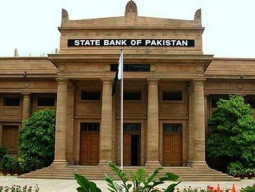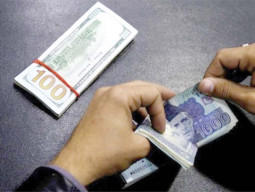
KARACHI: Moody’s Investors Service has painted a bleak picture of Pakistan’s economy, identifying it among the markets most vulnerable to dollar appreciation, as its external vulnerability risk, and fiscal strength take toll on foreign exchange reserves.
The research, released on Friday, identified Argentina, Ghana, Mongolia, Pakistan, Sri Lanka and Zambia, beside Turkey, as the emerging and frontier market sovereigns that are most vulnerable to dollar appreciation.
The credit ratings agency, which downgraded the outlook on Pakistan’s rating to negative from stable in June this year, said “sovereigns with relatively high debt burdens, weak debt affordability and smaller buffers are especially susceptible to a deterioration in their credit profiles in the event of rising funding costs”.
“We reflect this vulnerability in our assessment of a sovereign’s external vulnerability risk, government liquidity risk and fiscal strength. Looking at the size and composition of the balance of payments and foreign exchange reserves, we identified Argentina, Ghana, Mongolia, Pakistan, Sri Lanka and Zambia, beside Turkey, as the emerging and frontier market sovereigns that are most vulnerable to dollar appreciation.
Dollar hovers around Rs130.5 in open market
“Out of these, Argentina and, to a lesser extent, Pakistan’s currencies have experienced marked depreciations against the dollar year to date.”
The report comes at a time when foreign exchange reserves held by Pakistan’s central bank have dropped to $10.23 billion - enough to only cover a month and a half of imports - while the current account deficit widened to $17.99 billion in fiscal 2017-18.
Economic managers have already let the rupee fall on four separate occasions since December 2017, and increased the key interest rate by 175 basis points this year.
As hinted earlier, rupee dives to Rs123 to US dollar
But heavy demand and expenditure on account of the China-Pakistan Economic Corridor (CPEC) have squeezed the country’s finances, prompting the new government to consider going back to the International Monetary Fund (IMF) for yet another programme.
“Pakistan is facing elevated external pressures stemming from strong domestic demand and capital-import heavy investments related to CPEC,” stated Moody’s on Pakistan. “We expect a current account deficit of 4.8% of GDP this year. While reserve coverage of external debt repayments remains adequate, we expect that coverage to weaken. Unless capital inflows increase substantially, possibly through and in combination with an IMF program, we see elevated risk of a further erosion in foreign exchange reserves.”
Moody’s said Pakistan’s gross borrowing requirements are among the highest among rated sovereigns at around 27-30% of GDP, driven by persistent fiscal deficits and the government’s reliance on short-term debt, with an average maturity of 3.8 years.
“Around one-third of government debt is denominated in foreign currency.
“Although Pakistan is not a major recipient of volatile capital inflows, local currency depreciation could raise inflation and prompt additional domestic rate hikes, which would pass through to borrowing costs and further weaken the government’s fragile fiscal position. We find that Pakistan’s debt affordability would weaken significantly from already low levels in the event of a sharp and sustained increase in the cost of debt.”
Impact on asset, debt markets
The report also mentioned several other economies in the light of Turkey’s currency crisis and saw the impact of vulnerabilities of emerging and frontier economies on the capital and debt markets.
The ratings agency said a slump in the Turkish currency, bonds and stocks, amid investor concerns about the country’s economic, fiscal and external stability, has sparked renewed selling in the assets and a focus on the vulnerabilities of other emerging and frontier market nations, following periods of financial market volatility earlier this year.
Rupee appreciates against US dollar in open- and inter-bank markets
“The emerging market countries that the Institute of International Finance (IIF) tracks daily experienced $2.7 billion of portfolio outflows over the week to 17 August 2018 when concerns over Turkey escalated, compared with broadly balanced flows in the first six months of the year. In the month to mid-August, emerging markets still experienced net portfolio inflows overall, although South Africa saw substantial net outflows for both equities and debt,” it said.
Published in The Express Tribune, August 25th, 2018.
Like Business on Facebook, follow @TribuneBiz on Twitter to stay informed and join in the conversation.






















































COMMENTS (1)
Comments are moderated and generally will be posted if they are on-topic and not abusive.
For more information, please see our Comments FAQ